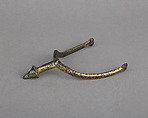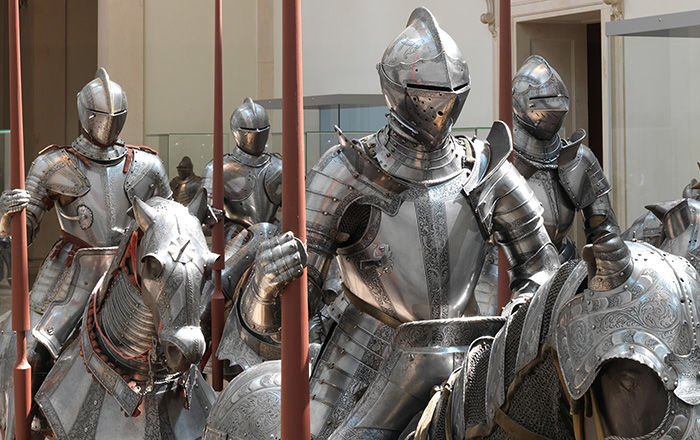Prick Spur (Right)
Not on view
The goad (point) of this gilded spur is shaped as a flower, and its body decorated with a geometrical incised decoration, simpler on the left branch as it would have been on the inside of the foot. The asymmetrical branches were designed to offer more comfort to the rider.
The prick spur was the first type of spur to be invented, and it consists of a goad or prick, more or less pointed, connected to side arms or a heel plate. Prick spurs were the main type of spurs used in the Middle Ages until the mid-14th century, when they were supplanted by rowel spurs, which appeared in Europe a century before and with which they had cohabitated for a time. As a knight’s status was closely related to his horse, spurs became one of the symbols of chivalry, and one of the tokens given to him during his knighting.
This image cannot be enlarged, viewed at full screen, or downloaded.
This artwork is meant to be viewed from right to left. Scroll left to view more.



